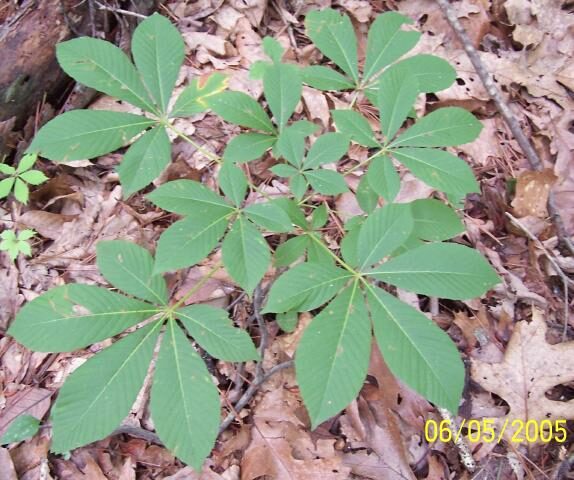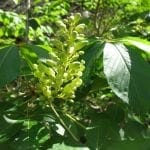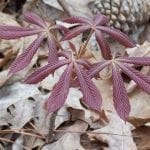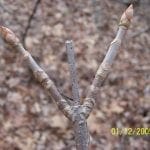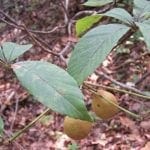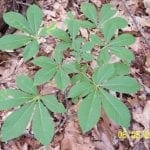- Inflorescence
- Spring foliage
- Winter twigs
- New growth
- Fruit
- Summer foliage
- Fall foliage
Scientific Name:
Aesculus sylvatica
Common Name:
Painted buckeye
Scientific Name Pronounciation:
(ES-kew-lus sil-VAT-ee-kuh)
Plant Type:
Shrub
Plant Hardiness Zones:
6-9
Plant Hardiness Zone(s):
Usual Size:
6-12 ft. H X 6-12 ft. W
Flower:
Flowers are 1 to 1.25 inches long, with four unequal, bright yellow or sometimes reddish petals and 6 or 7 shorter stamens; in upright branched clusters 4 to 6 inches long.
Bloom Time Notes:
Spring
Leaf:
Deciduous; opposite; palmately compound leaves on slender leafstalk with 5 (sometimes 7) leaflets 4 to 6 inches long, 1.5 to 2 inches wide; finely sawtoothed; short stalked; yellow-green above, green and often hairy beneath.
Fruit:
Capsule globe-shaped, smooth, light brown, and leathery; 1 to 1.5 inches in diameter; 1 to 3 seeds maturing in late summer.
Wildlife:
Hummingbirds and bees for flowers, small mammals for seeds.
Natural Habitat:
Most often found on well-drained, open wooded slopes as understory plant; rarely on stream banks.
Propagation:
Collect seed as soon as capsules begin to split in late summer; best grown from stratified seed in very early spring; protect seeds and very young plants from squirrels; seeds harvested in late summer and planted immediately into warm soil tend to germinate but might not be tough enough to survive a cold winter.
Bloom Time:
Sun or Shade:
Companion Plants:
Cultural Notes:
Grows best in rich, moist, but well-drained soil; if the usually yellow flowers are tinged with red it might have hybridized with Red Buckeye (Aesculus pavia). Large showy flowers; makes an excellent naturalizing plant; nectar source for hummingbirds.
When transplanting, dig shrubs while dormant if possible. Aesculus tends to have a deep taproot so transplant young shrubs.
Other Common Names: Yellow buckeye, Georgia buckeye

